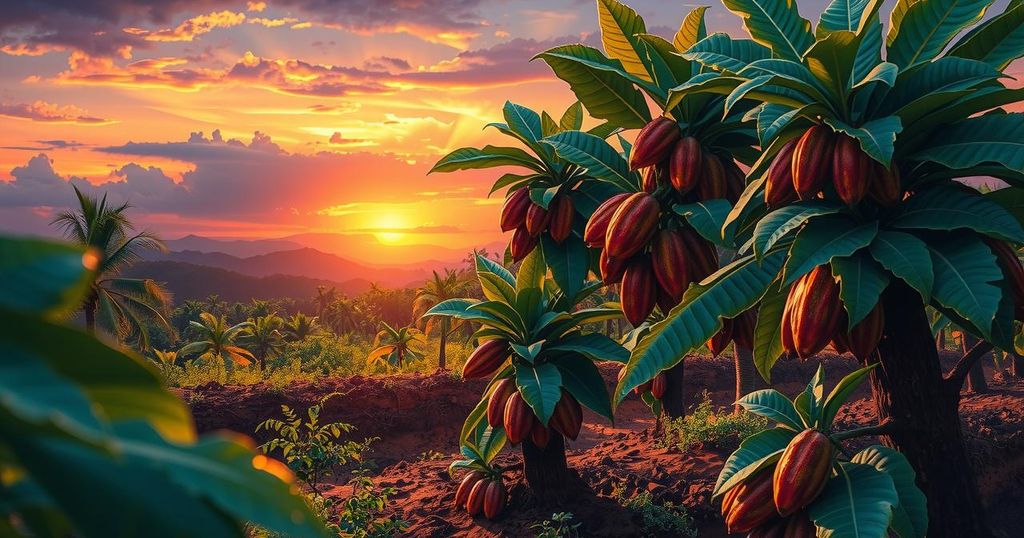Rising Cocoa Prices Challenge Farmers and Chocolate Manufacturers
Cocoa prices have soared due to climate challenges, with production hit hard by extreme weather in West Africa. While prices peaked in late 2024, they have since declined with a predicted surplus. Farmers face tough decisions, some abandoning cocoa. Meanwhile, manufacturers seek alternatives, adapting to ongoing crises in the cocoa industry.
In recent years, chocolate prices have experienced a dramatic rise due to various production challenges. Factors such as climate change have severely impacted cocoa-producing nations, particularly in West Africa, the heart of the cocoa industry. After swinging between extremes of rainfall and drought, cocoa prices surged to record highs in 2024, only to see a significant drop afterward. The International Cocoa Organization says a global surplus may emerge, but apprehensions remain about sustainability and future yields.
The cocoa market’s woes stem from a mix of climate issues and frightful weather patterns that have oscillated between excessive rainfall in 2023 and harsh droughts in 2024. Cocoa prices peaked at nearly USD 12,931 per metric ton in December 2024, then tumbled to around USD 8,200 due to a forecasted surplus of 142,000 metric tonnes for 2024-2025.
However, there are warnings that the ongoing dry conditions could replicate last year’s crop issues. Carsten Fritsch from Commerzbank pointed out that ageing trees and disease persist as critical threats, especially in Ivory Coast and Ghana, which contribute roughly 60 percent of global cocoa production. As these challenges mount, farmers are forced to make tough decisions about their livelihoods.
In Ghana, some cocoa farmers have abandoned their crops entirely, opting instead to sell their land to illegal gold miners, hoping to profit from soaring gold prices. Many are trapped in poverty, lacking the resources to improve their farming operations or install protective measures against climate change.
On the other hand, cocoa producers in Brazil are experimenting with full-sun cocoa farms, partially buoyed by improved financing options. If this method proves viable, it could potentially transform the cocoa industry’s outlook. Yet, experts warn that such practices, while promising, may increase the vulnerability of these trees to diseases.
Meanwhile, chocolate manufacturers are getting creative in response to the cocoa crisis. Cargill, a key player in the agri-food sector, is collaborating with Voyage Foods to create cocoa-free chocolate bars using grape seeds and sunflower flour instead. Startups like Nukoko and Planet A are working on innovative ingredients to replicate chocolate flavors. Some, such as Fix Dessert Chocolatier, are introducing alternative treats like Dubai chocolate, inspired by Middle Eastern desserts. Established brands like Mars are also adjusting by raising prices but reducing product sizes.
In short, the cocoa industry is currently navigating a rocky landscape marked by climate challenges and market volatility. While some strategies show promise, such as Brazil’s innovative farms, others point to the grim realities that many farmers face. The future of cocoa and chocolate remains uncertain as the industry grapples with these compounding pressures.
In conclusion, cocoa prices have been soaring primarily due to climate-related challenges in production. West Africa, a vital region for cocoa, has faced turbulent weather patterns impacting outputs and farmer livelihoods. While some regions are experimenting with innovative farming methods, others are succumbing to alternative lucrative industries. Chocolate manufacturers are adapting by developing new formulas or modifying existing products. It is apparent that the cocoa market must evolve rapidly to overcome its current hurdles.
Original Source: macaonews.org




Post Comment